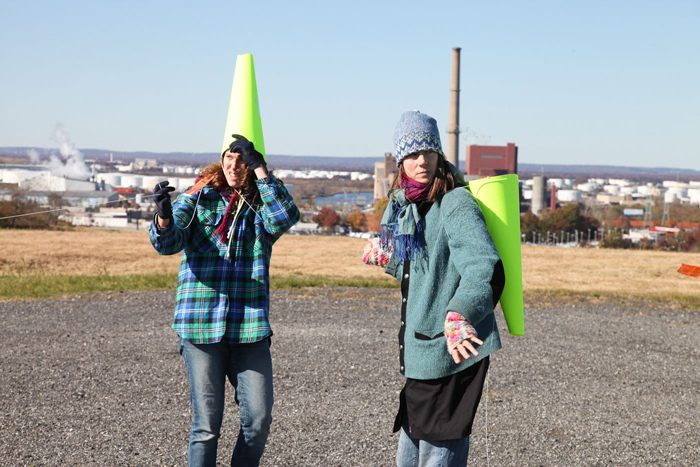
Photo by Marina Zamalin.
In 2006 choreographer Kathy Westwater initiated what was to become over time the multi-cycled, interdisciplinary performance/research project PARK. PARK expresses forms of making and unmaking that respond to the site of Fresh Kills Landfill in New York City. Once the largest landfill in the world, Fresh Kills is undergoing a 30-year transformation into a park. During the project cycle developed in the summer and fall of 2011, PARK collaborators—Westwater, poet Jennifer Scappettone, and architect Seung Jae Lee—were given rare access to the site for the second of two residencies granted by the New York City Departments of Parks and Recreation and Sanitation. To culminate their presence there, on November 5, 2011, they created the program PARK: Fresh Kills #2—for which fourteen performers and twenty audience participants were given access to the moundscape that is normally off-limits to the public. Documented below through a selection of text, photos, illustrations, and performance video are aspects of the program enacted that day.
Opening comments:
Welcome to the North Mound.
As you know from having registered and submitted yourselves to the special conditions of your arrival here today, we’ve entered a site that’s in a rare state, in transition from embodying a massive monument to consumption to becoming parkland: a quadrant of the moundscape is in the process of being “capped.”
Part of our work here has been to leave a record of that state: to etch into the landscape through our respective languages—dance, poetry, architecture—the conditions that characterize its translation from a site of trauma to a commons.
This time interacting with the site has allowed us to conduct the research necessary to try to capture the condition and social consequence of the moundscape in this particular fleeting phase of its evolution. Engaging the landscape physically, through a range of material routes, has permitted us to experience parallels between the infrastructure of the site, economies of consumption and waste, and the human body.
Gaining access to this place to explore it through our disciplines and those with which we’re less familiar—trailbuilding, the science and engineering of landfills, the chemistry of leachate and of effluent—and to share it with you is a more complicated matter than any of us could have imagined at the outset of our work—just as the process of manufacturing, transporting, marketing, and disposing of the household waste now being digested below our feet—and that of reclaiming that waste as contemplative space—are more complicated than meets the naked eye.
This landfill, with its colossal proportions, has been compared in public discourse to monuments such as the Great Wall of China—so that one of the things you often hear about it is that it can be seen from outer space. These associations, whether apocryphal or not, trigger a range of questions about the objecthood of the site; that Fresh Kills is both “nature” and thing is very unusual conceptually and physically to encounter, and that has led us to amalgamated, mixed expressions.
The story of this site and of its reclamation is largely invisible, even when you visit—despite the fact that it’s a fundamental organ of the ecosystem of New York City and its waters. To make it apprehensible, we’ve created a format for this afternoon to share with you that we’ve come to think of as a hybrid program of performative and research-based acts. We’ve appropriated language from other disciplines; we’ve hybridized practices, stretching ourselves in the zones of collision between dance, architecture, and poetry; we’ve channeled countless hours of labor into this liminal site that so few ponder or even discern—to construct pathways into the site, exploring our complicity in its creation.
Thank you for coming out on this chilly day to explore Fresh Kills in its bare prewinter state, when its history is harder to forget….
—Jennifer Scappettone with Kathy Westwater and Seung Jae Lee
[scroll left to right]
Figure 1
Archival photo of Fresh Kills Landfill before closure in 2001.
Photo by Chester Higgins via Wikimedia commons.
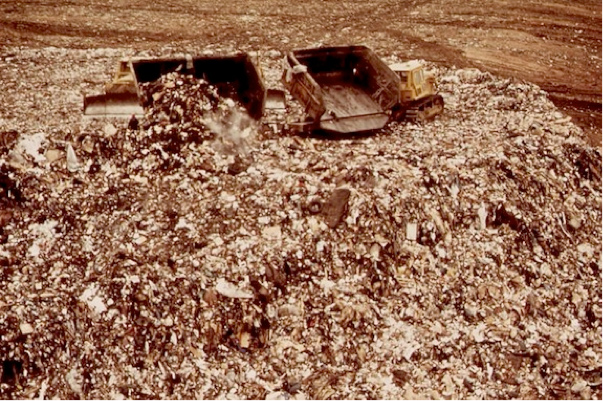
Figure 1
Figure 2
Aerial view of summit of North Mound at Fresh Kills after closure, with scaled perimeter measurement of a typical New York City block juxtaposed.
Plan diagram: Seung Jae Lee for PARK: Fresh Kills #2 (2011).
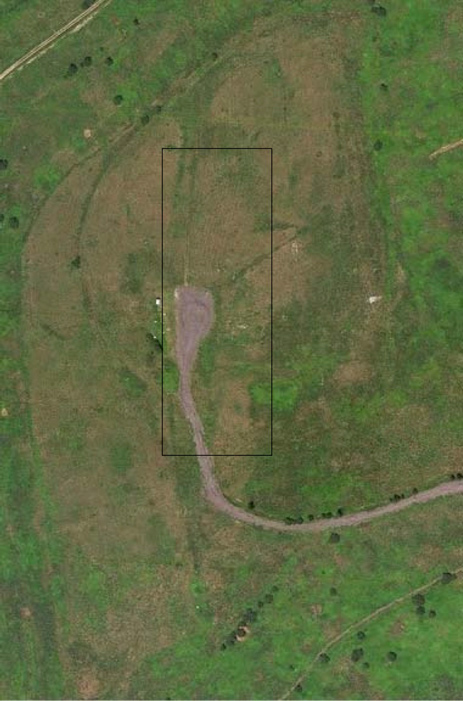
Figure 2
Figure 3
Performers ascend the North Mound. Scaled perimeter of typical NYC block indicated on the surface of the summit.
Illustration: Seung Jae Lee for PARK: Fresh Kills #2 (2011).
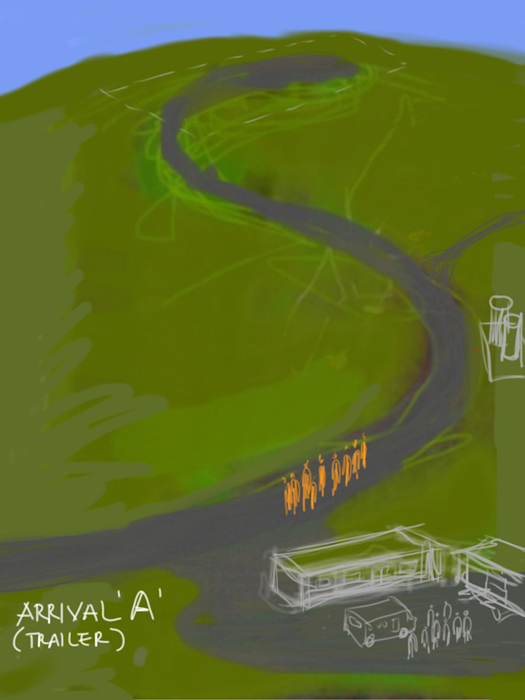
Figure 3
Figure 4
On the summit of North Mound, performers, indicated by yellow figures, elevate overhead kite string spanning the plotted perimeter of a city block, and threaded with words sourced from garbage and fragments of poetry by Scappettone. Audience participants are indicated by white figures.
Illustration: Seung Jae Lee for PARK: Fresh Kills #2 (2011).

Figure 4
Figure 5
Two sides of the block form collapse in space while the performers walk toward one another, reciting ‘trash text’ through cardboard megaphones.
Illustration: Seung Jae Lee for PARK: Fresh Kills #2 (2011).
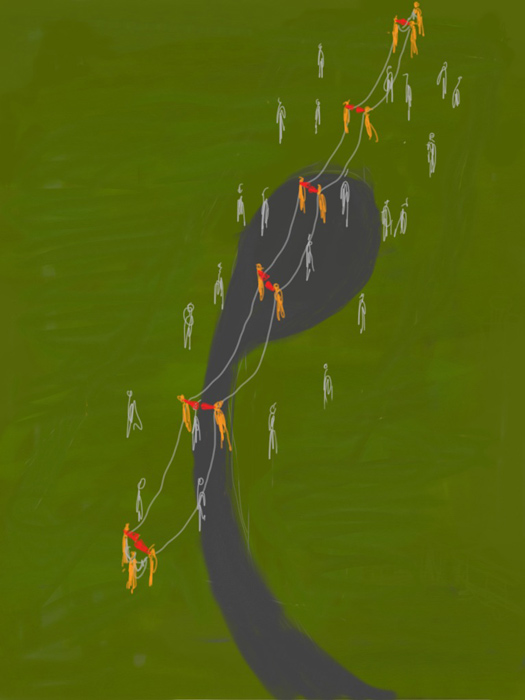
Figure 5
Figure 6
Close-up of threaded ‘trash text’.
Photo: Seung Jae Lee for PARK: Fresh Kills #2 (2011).
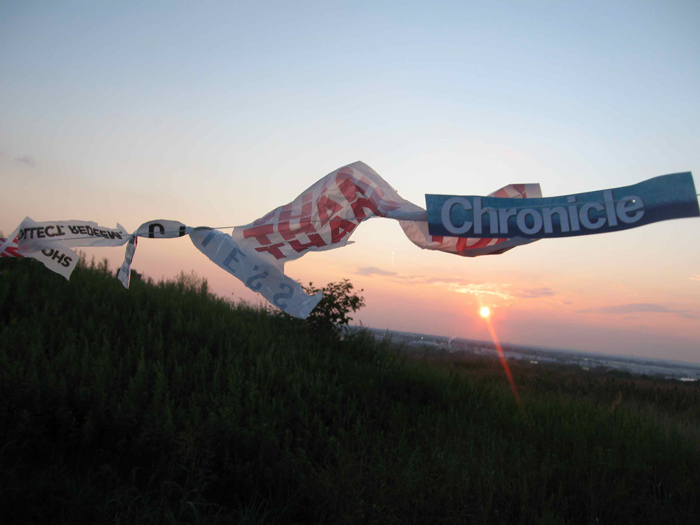
Figure 6
Video
This video excerpt begins just as the performers are transitioning from elevating the kite-string block form overhead (figure 4) to collapsing the sides of the block form together while sampling and reciting from the ‘trash text’ (figure 5).
PARK: Fresh Kills #2 (2011)
Camera: Mark Robison, Character Generators.
Featured Performer: Lorene Bouboushian.